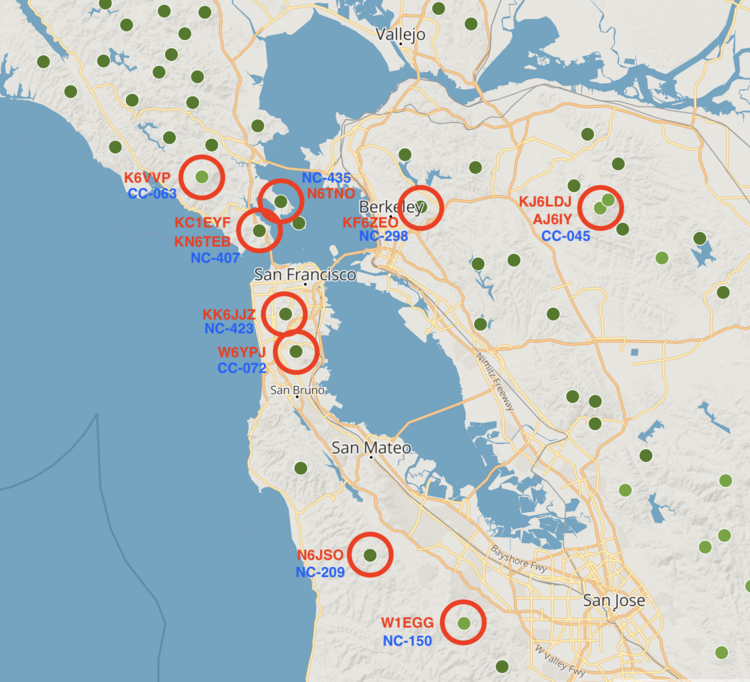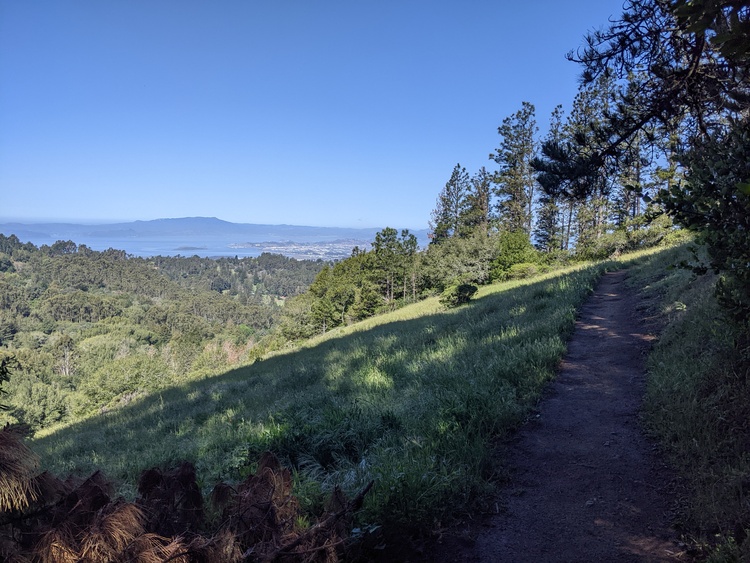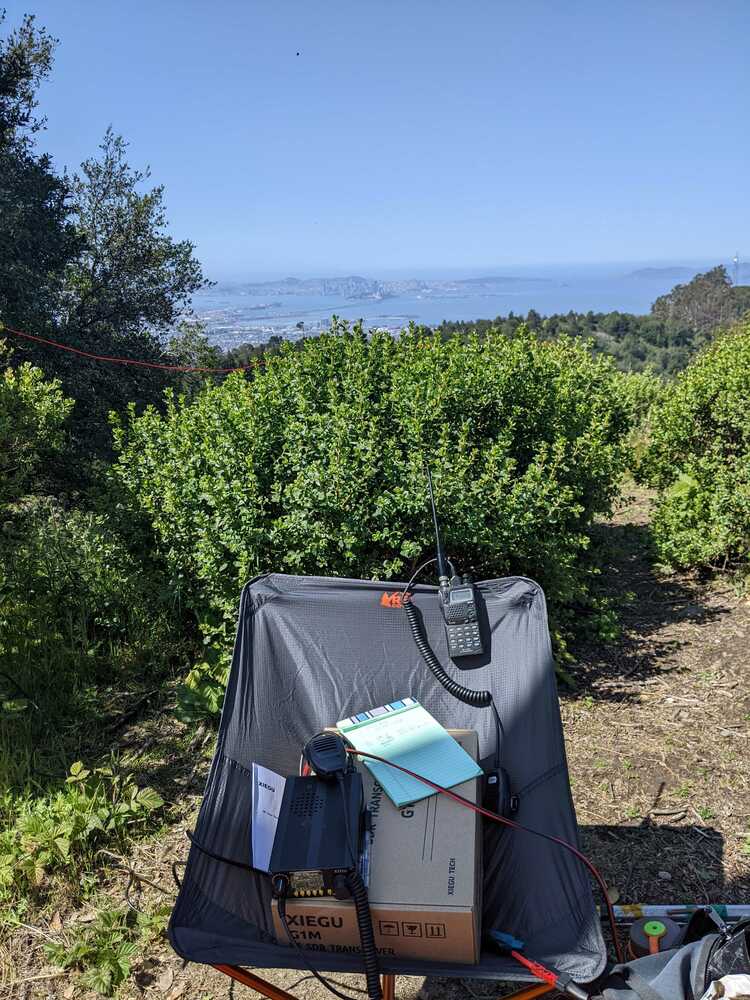The San Francisco Radio Club organized another Summits on the Air event on 23 April 2022. For this "Simul-SOTA" event, there was 11 amateur radio operators activating 9 summits around the Bay Area. Steve W1EGG made a handy map with who was activating each peak:
I activated Vollmer Peak, which is at the southern end of Tilden Park in the hills above Berkeley. Parking at the trailhead was easy in the morning, but by the time I left parking was nonexistent.
The hike up was short, and the views were excellent. I could clearly see Mt. Tamalpais across the bay, which was activated by Vlad K6VVP.
A lot of the other peaks that were activated that morning were visible from from the top, including my previous activated San Pedro Mountain.
HF Radio
This was my first HF activation. I borrowed a Xiegu G1M radio, which is a small QRP SDR. I also borrowed a lithium power pack, and a 49:1 balun for an End-Fed Half Wave antenna. I cut a piece of two conductor zip-cord 33 feet long, which is a half-wave on 20 meters, and split the conductors so I had two 33-foot segments. One segment was the driven element, and the other segment was laid on the ground as the counterpoise.
It took about 20 minutes to throw the antenna up in a tree, and I strung the counterpoise on the ground. Tuning around 20 meters didn't yield a lot of activity, but there were a few local stations, many of whom were also participating in the Simul-SOTA event.
I spent a long time calling CQ and trying to make a contact on 20 meters, but no luck! I just wasn't being heard. Other stations could tell I was trying to contact them, but they only got half a callsign. In the end, I only contacted Jeff AJ6IY on HF. He was also participating in the Simul-SOTA event, and was located on Mt. Diablo, about 16 miles (27 km) to the east.
After talking with some other hams a few days after the event, I realized that I had accidentally created a full-wave dipole antenna. Full-wave dipole antennas don't work well at all, because they have very high impedance at the feed point. Typical dipole antennas are half-wave in length (quarter wave per side), which means an impedance of about 50 ohms at the feed point. This was (probably) the reason why I could hear a lot of stations, but they couldn't hear me.
2m Front-End Overload
Since I wasn't getting any HF contacts, I turned on my trusty Icom T7H dual-band hand held radio, and assembled my Arrow antenna. There was plenty of action on 146.52 MHz, and I made several contacts with people all over the Bay Area.
However, every 10 or 15 minutes, the other stations would just disappear or become very quiet. This is a classic example of receiver front-end overload, when a very strong signal just hammers the radio front end and causes problems. On hilltops with other radio systems, like this one, front-end overload is common. Cheap Baofeng radios are especially prone to this problem; transmissions work fine, but the SOTA station can't hear any replies.
Occasionally when my radio was overloaded, snippets of voice would come thru, and I realized that the offending station was actually an amateur radio repeater nearby on Vollmer Peak. I was being jammed by a repeater, so I was only able to make contacts on 2 meters when nobody was using the repeater.
Results
I made a total of 10 contacts during this activation. All except one of them was on 2 meters FM, with most of the contacts other Simul-SOTA participants on other peaks in the Bay Area.
Lessons Learned:
- Test antennas beforehand. I just brought bare wire that was cut to half-wavelength on 20 meters, but I should have made a few contacts at home before going into the field. I should have S11 swept the antenna, which would have immediately shown that something was wrong.
- Test radios beforehand. This was the first time I had used a Xiegu G1M, so I wasn't really familiar with how it worked. Luckily I had the manual, so I eventually figured out what to do. As with my antenna, I really should have tried things out the day before.
- Bring lots of water. I brought 1 liter, which was not enough for the (hot) April day. I did bring a sandwich, which was nice to eat between contacts.
- Bring a pole or broomstick to hold the Arrow antenna. Holding up a 2m beam antenna is tiring!


